Understanding the Landscape of Pain Management Outcomes
Pain affects millions globally, leading to substantial individual suffering and socioeconomic costs. Advances in pain management interventions are critical, yet understanding their impact requires detailed analysis of patient outcomes, supported by validated assessment tools and comprehensive clinical data. This article explores key statistical findings and research on patient outcomes in pain management treatments, evaluating various approaches, measurement strategies, and factors influencing effectiveness to enhance clinical practice and patient quality of life.
The Burden of Chronic Pain on Patients and Healthcare Systems
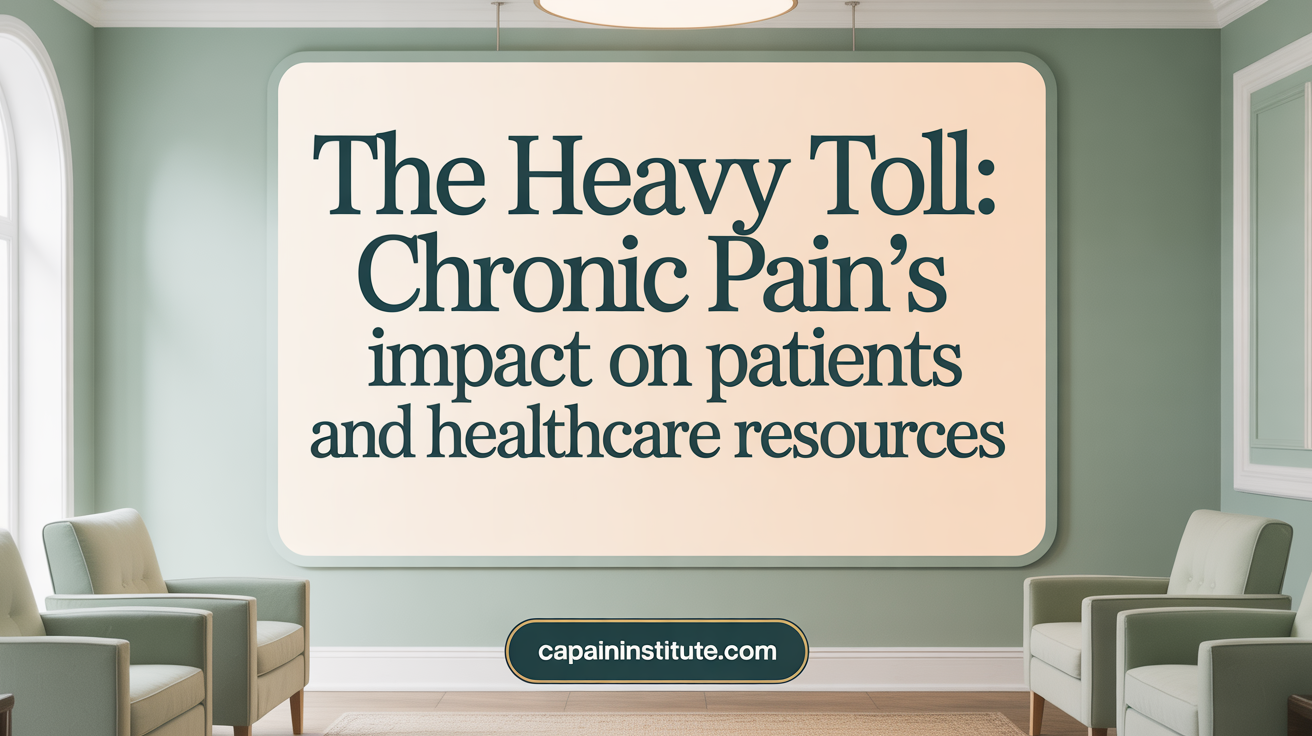
What is the prevalence of chronic pain?
Chronic pain is a widespread issue affecting approximately 20% of adults globally. In the United States alone, around 100 million Americans live with chronic pain, making it a significant public health concern.
Among veterans, the situation is even more pronounced, with more than 65% reporting pain within three months prior to surveys. Severe pain, classified as intense pain scores, is experienced by about 9% of veterans, especially those who served in recent conflicts.
Chronic pain does not only affect adults but also impacts adolescents and other age groups, contributing to ongoing disability and reduced quality of life.
What is the economic impact of chronic pain?
Chronic pain exerts a substantial financial toll on healthcare systems and societies. In the United States, the annual cost associated with managing chronic pain exceeds half a trillion dollars. This figure encompasses healthcare expenses, lost productivity, disability payments, and related costs.
The economic burden is further amplified by the need for diverse treatment strategies, including medications, therapies, and interventional procedures. These treatments aim to improve quality of life but can be costly.
Efforts to optimize pain management, such as interdisciplinary programs and innovative therapies, are essential in reducing these costs while improving patient outcomes.
| Aspect | Details | Additional Information |
|---|---|---|
| Prevalence in general population | 20% affected by chronic pain | Applies across different age groups and demographics |
| Veteran-specific prevalence | Over 65% report recent pain, with 9% experiencing severe pain | Especially high among veterans of recent conflicts |
| Economic costs | Over $500 billion annually in the U.S. | Includes healthcare and productivity loss |
| Treatment approaches | Pharmacological, behavioral, interventional, and complementary | Vary based on individual patient needs |
Understanding these statistics highlights the vast scope of chronic pain's impact and underscores the importance of effective management strategies.
Standardized Outcome Measures in Pain Management Research

What are the Numerical Rating Scale (NRS) and Visual Analog Scale (VAS)?
The Numerical Rating Scale (NRS) and Visual Analog Scale (VAS) are widely used tools to evaluate pain intensity. The NRS asks patients to rate their pain on a scale from 0 (no pain) to 10 (worst pain imaginable). It provides a quick, easy way for patients to communicate their pain levels.
The Visual Analog Scale (VAS), on the other hand, involves a straight line, usually 10 centimeters long, with endpoints labeled 'no pain' and 'worst pain.' Patients mark a point on the line that corresponds to their current pain level. Both scales are simple but effective for monitoring pain over time.
How are multidimensional pain instruments used?
Beyond pain intensity, clinicians recognize that pain affects multiple aspects of a person's life. This understanding has led to the development of multidimensional instruments, which assess various domains such as emotional well-being, physical functioning, and overall quality of life.
One such instrument is the IMMPACT (Initiative on Methods, Measurement, and Pain Assessment in Clinical Trials) framework. IMMPACT specifies core outcome domains for pain clinical trials, including:
| Domain | Description | Additional Details |
|---|---|---|
| Pain Intensity | Measurement of how severe pain is | Typically assessed with NRS or VAS |
| Physical Functioning | Impact on daily activities | Includes mobility, ability to perform tasks |
| Emotional Functioning | Mood and psychological impact | Assessed with questionnaires like PROMIS |
| Participant Ratings of Improvement | Patients’ perceptions of change | Often collected with global impression scales |
| Symptoms | Associated symptoms like fatigue | Measured through patient reports |
| Adverse Events | Side effects related to treatment | Monitored throughout therapy |
| Participant Disposition | Engagement and adherence | Tracks study completion or dropout |
The role of standardized assessment tools
Standardized measures ensure consistency across studies and practices. NIH’s PROMIS initiative offers validated questionnaires for patients to report outcomes related not only to pain but also fatigue, depression, anxiety, and social functioning.
Understanding meaningful changes in pain
Clinicians consider a reduction of around 30% in pain scores as meaningful, signifying noticeable improvement from the patient’s perspective. Specific cutoff points on NRS or VAS, such as a decrease from severe to moderate pain, help guide treatment decisions.
Benefits of using these tools
In clinical practice, employing standardized outcome measures helps tailor treatments to individual needs and track progress accurately. Researchers rely on these tools for comparing data across different populations and interventions, ultimately improving pain management strategies.
IMMPACT Core Outcome Domains for Chronic Pain Trials
 When conducting research and evaluating treatment outcomes for chronic pain, the Initiative on Methods, Measurement, and Pain Assessment in Clinical Trials (IMMPACT) advocates for a comprehensive set of outcome domains. These domains help ensure that clinical trials provide a well-rounded picture of how interventions impact patients.
When conducting research and evaluating treatment outcomes for chronic pain, the Initiative on Methods, Measurement, and Pain Assessment in Clinical Trials (IMMPACT) advocates for a comprehensive set of outcome domains. These domains help ensure that clinical trials provide a well-rounded picture of how interventions impact patients.
The primary domains recommended by IMMPACT include pain intensity, physical functioning, emotional functioning, patient global impression of change, symptoms, adverse events, and participant disposition.
Pain intensity is typically measured using validated tools such as the Numerical Rating Scale (NRS) and the Visual Analog Scale (VAS). These instruments allow patients to provide quantifiable assessments of their pain severity.
Physical functioning evaluates how pain interferes with daily activities and mobility. Standardized questionnaires are used to gauge physical capacity and limitations resulting from pain.
Emotional functioning assesses psychological impacts like depression, anxiety, and overall mood, which are often affected by chronic pain. Patient-reported outcomes in this domain are crucial for understanding the psychosocial toll of persistent pain.
Patient Global Impression of Change (PGIC) offers insight from the patient’s perspective about overall improvement or worsening, synthesizing their experience into a single, meaningful measure.
Symptoms and adverse events include the monitoring of side effects and other related symptoms arising from treatment interventions. Documenting these helps balance benefits and risks.
Participant disposition pertains to patient retention and adherence, significant factors that influence trial validity and interpretation.
To interpret these outcomes accurately, IMMPACT recommends combining validated outcome measures with advanced statistical analyses. Techniques such as confidence intervals, responder analyses, and the number needed to treat (NNT) help determine clinical relevance and the practical significance of results.
Proper interpretation also involves considering the overall study design, effect sizes, and benefit-risk assessments. This comprehensive approach ensures that trial results are both scientifically robust and meaningful for informing clinical practice.
In summary, employing a multi-dimensional set of validated measurement tools along with rigorous analytical methods is essential for accurately assessing the impact of interventions in chronic pain trials. Such thorough evaluation aids clinicians and researchers in making informed decisions to improve patient outcomes.
The Role of NIH PROMIS in Measuring Patient-Reported Outcomes
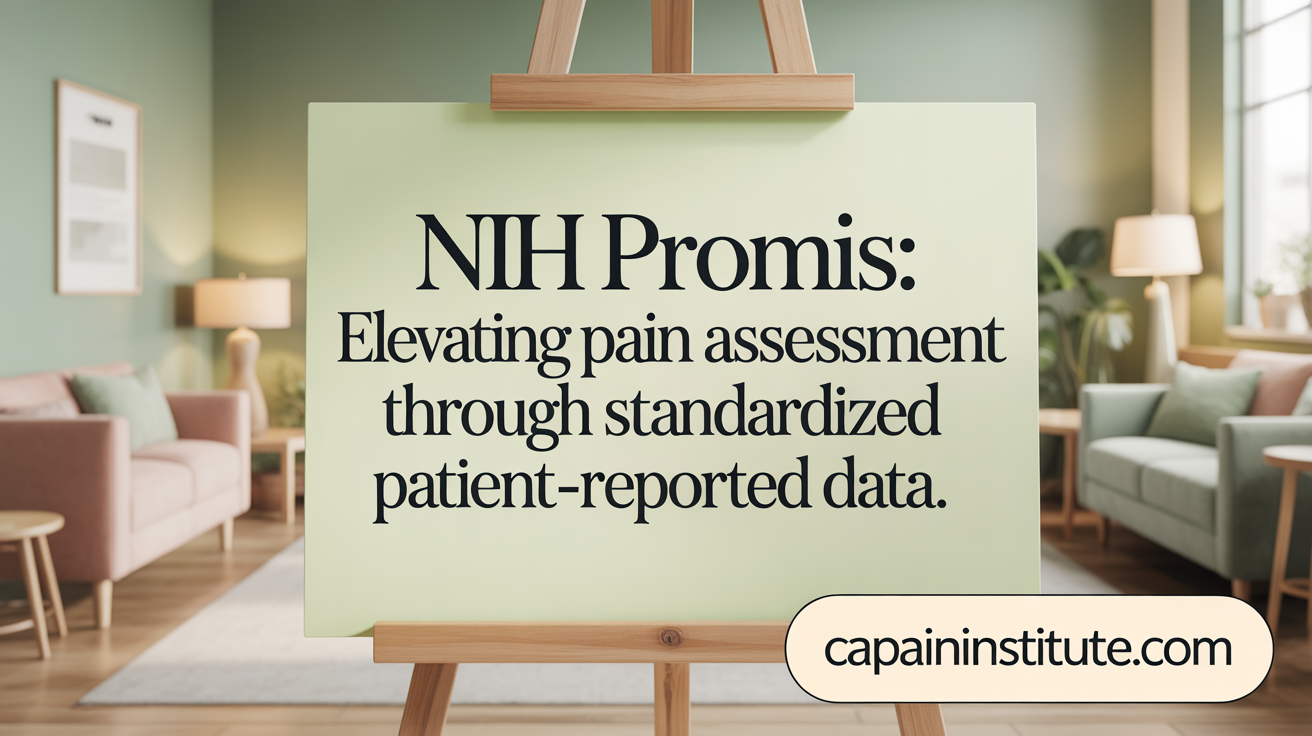
Validated Standardized Questionnaires
The NIH Patient-Reported Outcomes Measurement Information System (PROMIS) has developed a comprehensive set of validated, standardized questionnaires. These tools are designed to accurately capture and quantify the patient’s perspective on various health outcomes. Validating these measures ensures that they reliably reflect the true experiences and conditions of patients, making their use essential in both clinical research and routine healthcare practice.
Domains Measured: Pain, Fatigue, Physical Function, Depression, Anxiety, Social Function
PROMIS covers a broad spectrum of health-related quality of life domains. It includes questionnaires specifically measuring pain intensity and interference, levels of fatigue, physical functioning, and mental health aspects such as depression and anxiety. Additionally, social function is assessed to understand how health impacts social roles and interactions. These domains collectively offer a multidimensional view of patient well-being, enabling personalized treatment planning.
Importance of Patient-Reported Measures
Patient-reported outcome measures (PROMs) like those from PROMIS are critical in understanding the real-world effects of health conditions and their treatments. They provide insights that clinical tests or biomarkers alone may overlook. By capturing data directly from patients, clinicians and researchers can better evaluate treatment effectiveness, monitor disease progression, and tailor interventions to improve overall quality of life.
This approach emphasizes the importance of listening to patient voices, making PROMIS an invaluable tool in modern healthcare settings. It supports a patient-centered approach by ensuring that patient experiences and perceptions drive decision-making and policy development.
Clinically Meaningful Pain Reduction and Interpretations

What are the thresholds for clinically meaningful pain reduction?
In pain management, a reduction of about 30% in pain scores is generally considered meaningful. This threshold is widely accepted in clinical research and practice as it reflects a noticeable improvement from the patient's perspective.
Specifically, on common measurement scales like the Numerical Rating Scale (NRS) and Visual Analog Scale (VAS), certain cutoffs are used to interpret patient outcomes. For instance, a decrease of at least 2 points on an 11-point NRS often signifies a significant improvement in pain severity.
How does pain reduction relate to patient-reported improvements?
Patients' perceptions of their health and functionality are closely tied to the degree of pain relief they experience. Evidence shows that when pain decreases by around 30%, many patients report feeling better overall, with improvements in mood, physical activity, and quality of life.
Studies using instruments such as the Patient-Reported Outcomes Measurement Information System (PROMIS) and the IMPACT core domains have confirmed that meaningful pain reduction correlates with better emotional functioning and fewer adverse symptoms
How are NRS and VAS cutoffs utilized in practice?
Clinicians often use these standardized scales to gauge the effectiveness of treatment. For example, achieving a pain score below 4 on the NRS may be considered satisfactory for many patients.
Cutoffs provide a tangible goal for both providers and patients to work toward. Improvements crossing these thresholds are often associated with increased satisfaction, reduced disability, and enhanced overall health-related quality of life (HRQOL).
| Measurement Scale | Cutoff Point | Interpretation | Additional Notes |
|---|---|---|---|
| Numerical Rating Scale (NRS) | ≥30% reduction | Clinically meaningful | A decrease of 2 points on the 0–10 scale |
| Visual Analog Scale (VAS) | Specific cutoff varies | Patient-perceived improvement | Often refers to 10–20 mm change on a 100 mm line |
| Other Multidimensional Instruments | Vary | Reflect overall symptom improvement | Used alongside NRS and VAS for comprehensive assessment |
Understanding these thresholds aids clinicians in setting realistic goals and in evaluating whether a treatment offers tangible benefits for their patients.
Impact of Acute Pain Services on Postoperative Outcomes
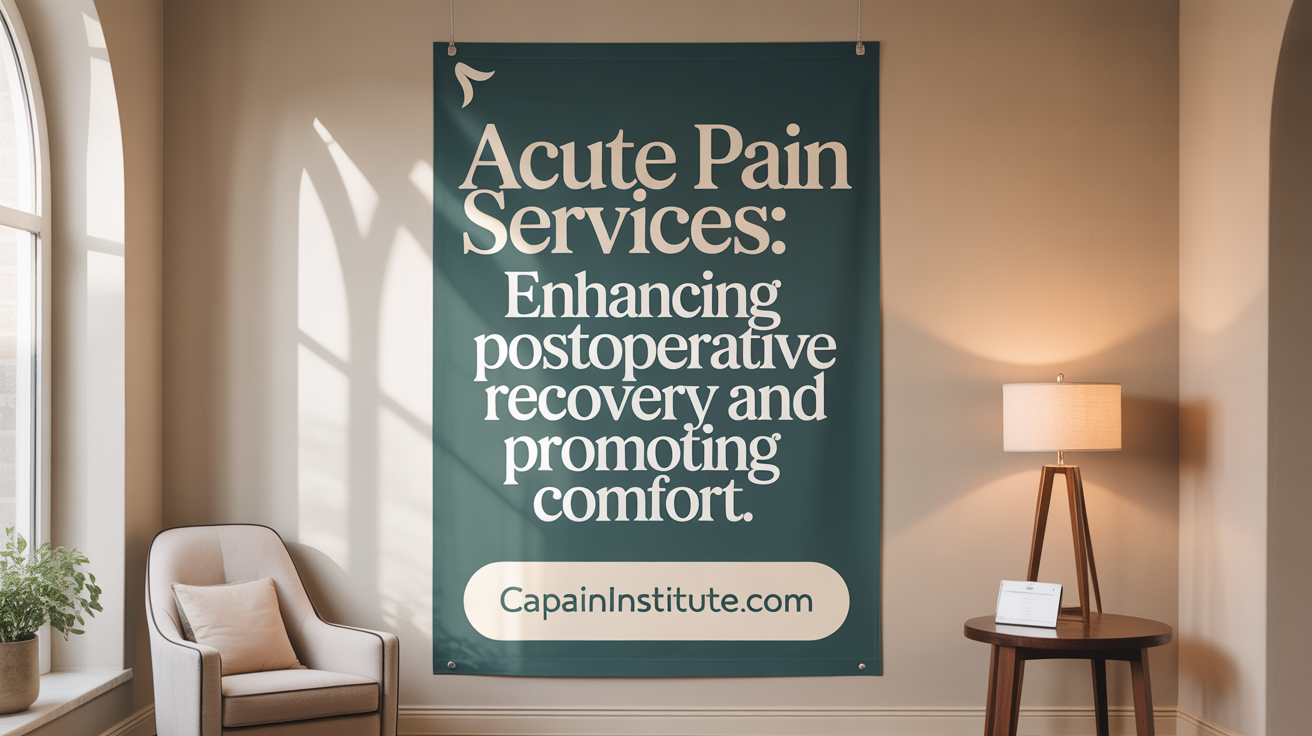
How do Acute Pain Services (APS) lower pain intensity scores?
Patients treated in hospitals equipped with Acute Pain Service (APS) programs often experience significant reductions in pain intensity after surgery. Studies show that patients report lower scores regarding the worst postoperative pain, particularly in the first 24 hours when pain tends to peak. The use of standardized pain assessment tools like the Numerical Rating Scale (NRS) and the Visual Analog Scale (VAS) helps clinicians track these improvements accurately.
Can APS reduce pain interference with daily activities?
An important benefit of APS is the decrease in how much pain impacts daily activities, both in bed and out of bed. Patients receiving APS report less pain-related interference with their ability to move, perform self-care, and engage in physical activities. This reduction in pain interference supports faster mobilization, which is crucial for recovery.
Does APS affect the occurrence of side effects from pain management?
Patients under APS care tend to experience fewer side effects associated with pain medication. Common adverse effects such as nausea, drowsiness, and dizziness are reported less frequently in hospitals with active APS programs. This improved safety profile may be linked to more tailored, multimodal pain management strategies that minimize reliance on opioids and maximize non-pharmacological interventions.
What evidence supports the benefits of APS globally?
International research consistently confirms the advantages of APS in postoperative pain management. Multiple studies across different countries have shown that structured pain management programs lead to lower pain scores, enhanced recovery, and reduced complications. The positive outcomes underscore the global consensus on the value of integrating APS into postoperative care pathways.
Postoperative Pain Experience and Its Effect on Recovery

What percentage of patients experience severe postoperative pain?
Immediately after surgery, a significant portion of patients face intense discomfort. Studies reveal that around 60% of surgical patients report severe pain during the first 24 hours following their procedure. However, most patients—about 70%—find that their pain tends to decrease within that first day.
How does pain change during the first 24 hours?
The initial day after surgery, often termed the critical postoperative period, is marked by highly variable pain levels. Despite the high incidence of severe pain, effective pain management strategies can help patients experience relief and improve their recovery process.
What are the effects of unmanaged acute pain on recovery?
Uncontrolled pain in the early postoperative phase can have serious consequences. It can delay physical recovery by restricting movement, increase the risk of complications such as blood clots, and negatively impact emotional well-being. Moreover, severe pain may lead to increased side effects from medication, including nausea and dizziness, which further hinder recovery.
Recent research underscores the importance of employing robust pain management strategies in the immediate hours after surgery. Hospitals with specialized Acute Pain Services (APS) have observed lower pain scores, less interference with daily activities, and fewer side effects, emphasizing the benefits of proactive pain control.
By managing pain effectively in this crucial period, healthcare providers can significantly enhance patient outcomes, reduce hospital stays, and promote a smoother, quicker recovery process.
How Physician Empathy Influences Pain Management Outcomes
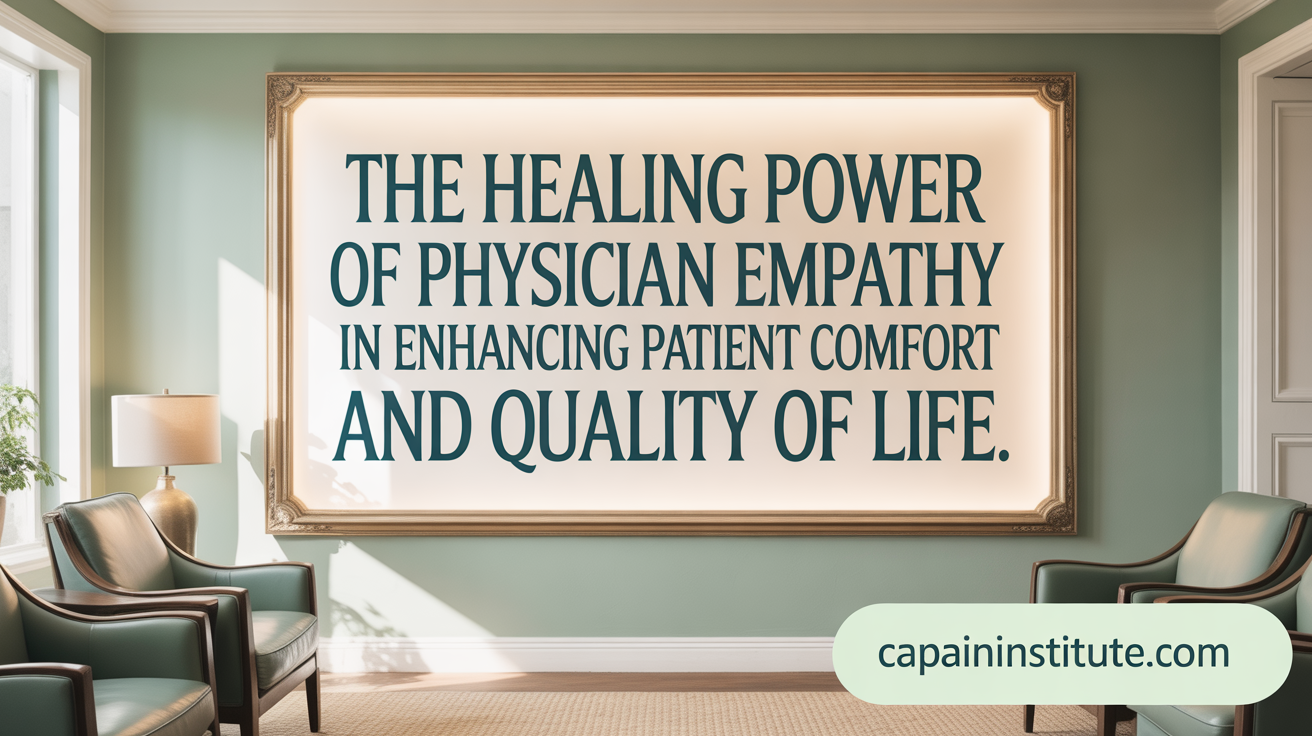
What is the relationship between physician empathy and pain intensity?
Research has shown that the level of empathy displayed by physicians can significantly influence how patients perceive and report their pain. Patients treated by physicians classified as very empathic (CARE measure score ≥30) reported lower average pain intensity, with mean scores of 6.3 compared to 6.7 for those treated by slightly empathic physicians. This decrease in reported pain suggests that empathy can help in reducing the subjective experience of pain, which is a crucial component in managing chronic and acute pain conditions.
How does empathy impact disability and health-related quality of life?
Beyond pain intensity, physician empathy also plays a crucial role in reducing back-related disability and improving overall health-related quality of life (HRQOL). Patients under highly empathetic physicians experienced fewer disabilities related to their pain, with scores of 14.9 versus 16.8 in less empathetic care settings. Moreover, these patients reported fewer deficits in key areas such as anxiety, depression, fatigue, sleep disturbance, and pain interference. The positive impact of empathy extended across multiple dimensions of well-being, highlighting its importance in holistic pain management.
How do empathy effects compare to other treatments?
Interestingly, the influence of physician empathy often surpasses that of other treatment modalities. Studies demonstrated that the effects of empathy on pain and quality of life were more substantial than some nonpharmacological treatments, opioid therapy, and lumbar spine surgeries, which are traditionally considered strong interventions for pain relief. This emphasizes that the clinician-patient relationship and emotional support can be central components, sometimes even more impactful than the specific medical procedures or medications used.
| Aspect | Impact of Physician Empathy | Comparative Effectiveness | Details |
|---|---|---|---|
| Pain Intensity | Lower reported pain scores (6.3 vs 6.7) | Surpassed effects of treatments like surgery | Significantly reduces perceived pain |
| Disability | Reduced back-related disability (14.9 vs 16.8) | Greater than nonpharmacological therapies | Enhances physical functioning |
| HRQOL | Fewer deficits in anxiety, depression, fatigue, sleep, pain interference | Outperforms opioid therapy in some cases | Improves overall life quality |
| Overall Outcomes | Better pain management and quality of life reports | Outstrips effects of many treatments | Highlights the importance of compassion |
Why is physician empathy so important?
Empathy fosters trust, improves communication, and enhances patient satisfaction—all of which are critical in effective pain management. By understanding patients’ emotional and psychological states, physicians can tailor treatments more effectively, leading to better outcomes. This patient-centered approach can help reduce reliance on medications alone, emphasizing the therapeutic power of empathy and emotional support.
In summary, integrating empathy into clinical practice isn't just a moral or ethical choice; it can be a powerful tool for improving pain outcomes and overall well-being in patients. Recognizing and cultivating empathy among healthcare providers could lead to more effective, compassionate pain management strategies that benefit both patients and practitioners.
Chronic Pain Prevalence and Unique Challenges Among Veterans
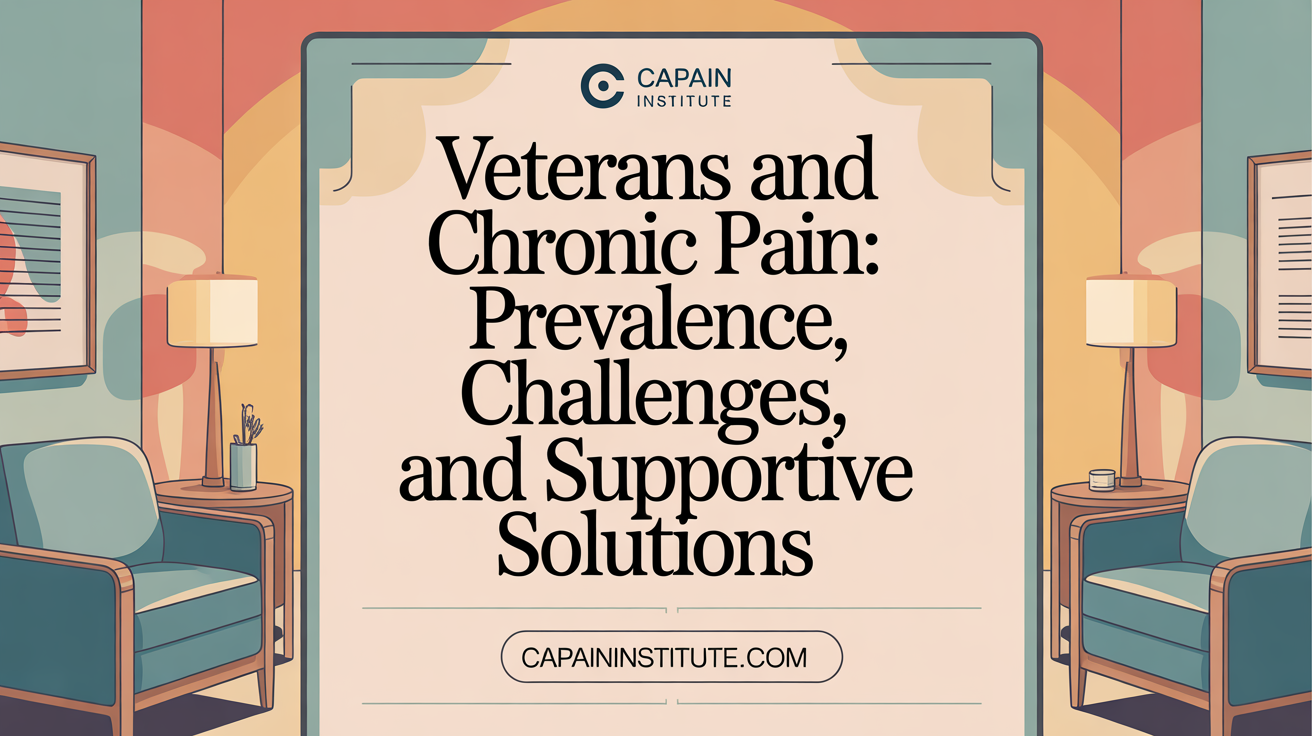
Higher Prevalence and Severity of Pain in Veterans
Research indicates that chronic pain affects a significant portion of the American population, with about 20% experiencing ongoing discomfort. Veterans, however, face a notably higher burden. A 2017 report revealed that 65.6% of American Veterans suffered from pain within three months prior to the survey, and 9.1% reported severe pain. This rate is approximately 40% greater than that of non-Veterans, highlighting the heightened risk within this group.
The severity of pain among Veterans often correlates with the nature of their service, including exposure to combat and physically demanding activities. Many Veterans experience persistent pain that can significantly impair daily functioning and quality of life.
Impact of Recent Conflicts on Pain Incidence
Recent military conflicts have contributed to the rise in pain prevalence among Veterans. Those who served in recent conflicts tend to report higher levels of pain, suggesting a link between combat exposure and long-term pain issues.
This demographic tends to experience complex pain conditions, often compounded by mental health challenges such as depression and anxiety. These overlapping issues make management more difficult and require comprehensive, tailored care approaches.
Special Considerations in Veteran Populations
Managing pain in Veterans involves unique challenges due to their complex health profiles. Studies from the Department of Veterans Affairs (VA) show that stepped-care models of pain management can effectively reduce disability and pain severity. These models emphasize personalized, multi-modal therapies, including pharmacological, behavioral, and interventional approaches.
Research also suggests that non-pharmacological treatments—such as yoga, acupuncture, and massage—can be particularly beneficial for Veterans with chronic pain, often resulting in improvements in function and reductions in medication reliance.
Moreover, factors like body mass index (BMI) play a role, with higher BMI associated with increased pain levels among Veterans with musculoskeletal issues. Addressing weight management can be an important component of pain control.
Given the complexity and the unique experiences of Veterans, healthcare providers should adopt a holistic and individualized approach. This strategy aims not only to reduce pain but also to improve mental health, social reintegration, and overall quality of life.
| Aspect | Findings | Additional Details |
|---|---|---|
| Pain prevalence | 65.6% reported pain | Higher than general population |
| Severe pain among Veterans | 9.1% | Greater in recent conflicts |
| Effective treatments | Non-opioid therapies | Including yoga, acupuncture, and massage |
| Impact of BMI | Higher BMI linked to more pain | Weight management recommended |
| Treatment models | Stepped-care approaches | Reduce disability and severity |
| Social function | Improvement in employment and social status | Post-treatment gains |
Understanding and addressing these specific challenges in Veterans is crucial for effective pain management and enhancing their overall health outcomes.
Veteran-Centered Pain Management Models and Their Effectiveness
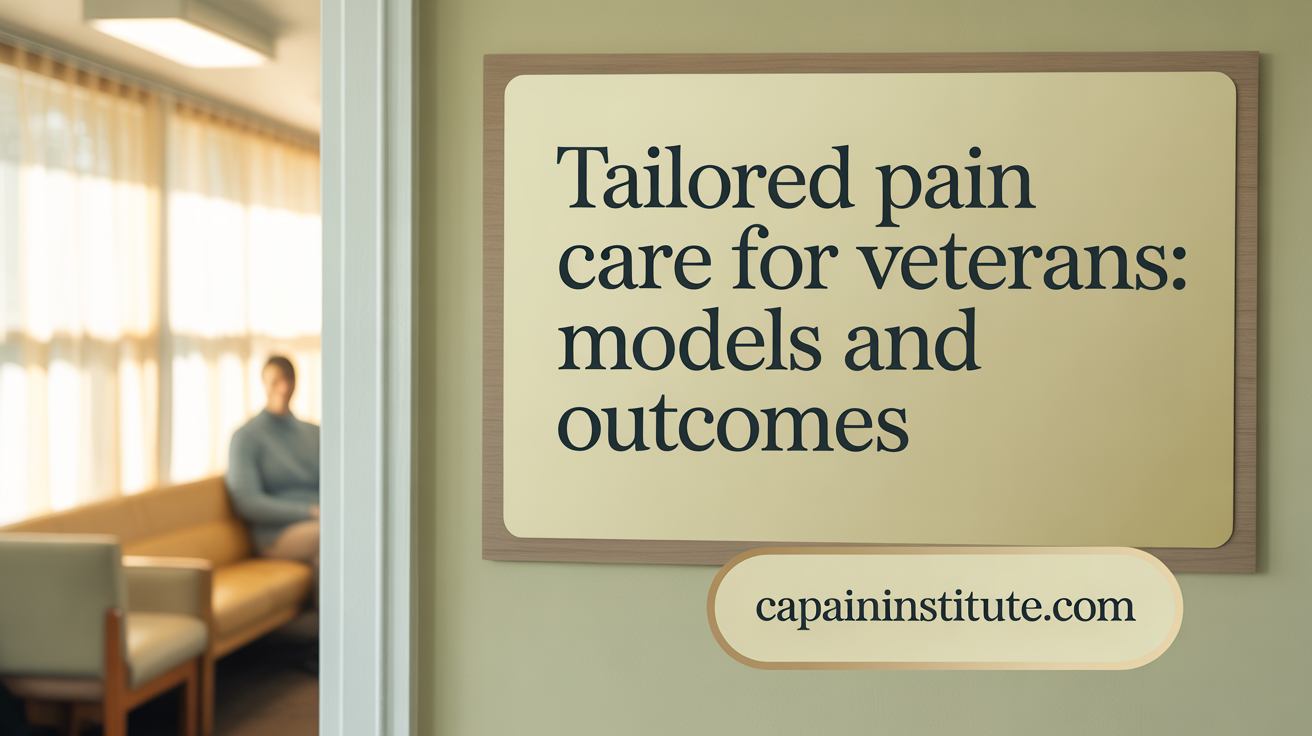
How Do Stepped-Care Models in Pain Management Help Veterans?
Stepped-care models provide a structured approach to managing chronic pain among Veterans. These models begin with less intensive interventions, such as education and self-management strategies, escalating to more complex treatments only if necessary. This method ensures tailored care, reducing unnecessary medication use and focusing on the patient's specific needs.
Research indicates that these models significantly improve outcomes by decreasing disability, pain severity, and interference with daily activities. Veterans undergoing stepped-care treatments report better functional capacity and a reduction in pain-related distress. This approach emphasizes ongoing assessment and adjustment, promoting more effective and individualized pain management.
How Do These Programs Affect Disability and Pain Severity?
Veteran-centered pain management programs, especially those that are interdisciplinary and community-based, have shown promising results. Many participants experience around 60% relief in pain levels after completing these programs.
Long-term follow-ups reveal that physical health improvements are durable, with over 75% of patients reporting they feel much or very much improved months after treatment. These programs also significantly reduce mental and emotional health burdens, such as depression and anxiety, which often accompany chronic pain.
Comparing Opioid and Non-Opioid Treatments in Veterans
Recent studies, including the VA SPACE trial, compare the effectiveness of opioid versus non-opioid medications. Findings suggest no significant difference in functional outcomes between the two approaches. Notably, Veterans treated with non-opioid options tend to experience fewer side effects like nausea, dizziness, and drowsiness.
Further evidence indicates that non-pharmacological treatments like acupuncture, yoga, and massage enhance pain relief and functionality, often surpassing pharmacotherapy alone. Importantly, non-opioid strategies are gaining favor due to their safety profiles and effectiveness, which aligns with current guidelines aimed at reducing opioid dependence.
| Treatment Type | Effectiveness in Pain Reduction | Impact on Side Effects | Additional Benefits |
|---|---|---|---|
| Opioid medications | Significant, but variable | Higher risk of nausea, dizziness, drowsiness | Potential for dependency, overdose risk |
| Non-opioid medications | Comparable or better | Fewer side effects | Better for long-term management |
| Non-pharmacological methods | High, especially when combined | Minimal, if any | Improved mental health, social functioning |
VA research supports a shift toward multimodal, non-opioid strategies coupled with personalized, stepped-care models. These approaches provide effective relief, improve function, and reduce risks, leading to more sustainable long-term outcomes for Veterans.
The Influence of Non-Pharmacological Treatments on Pain Outcomes
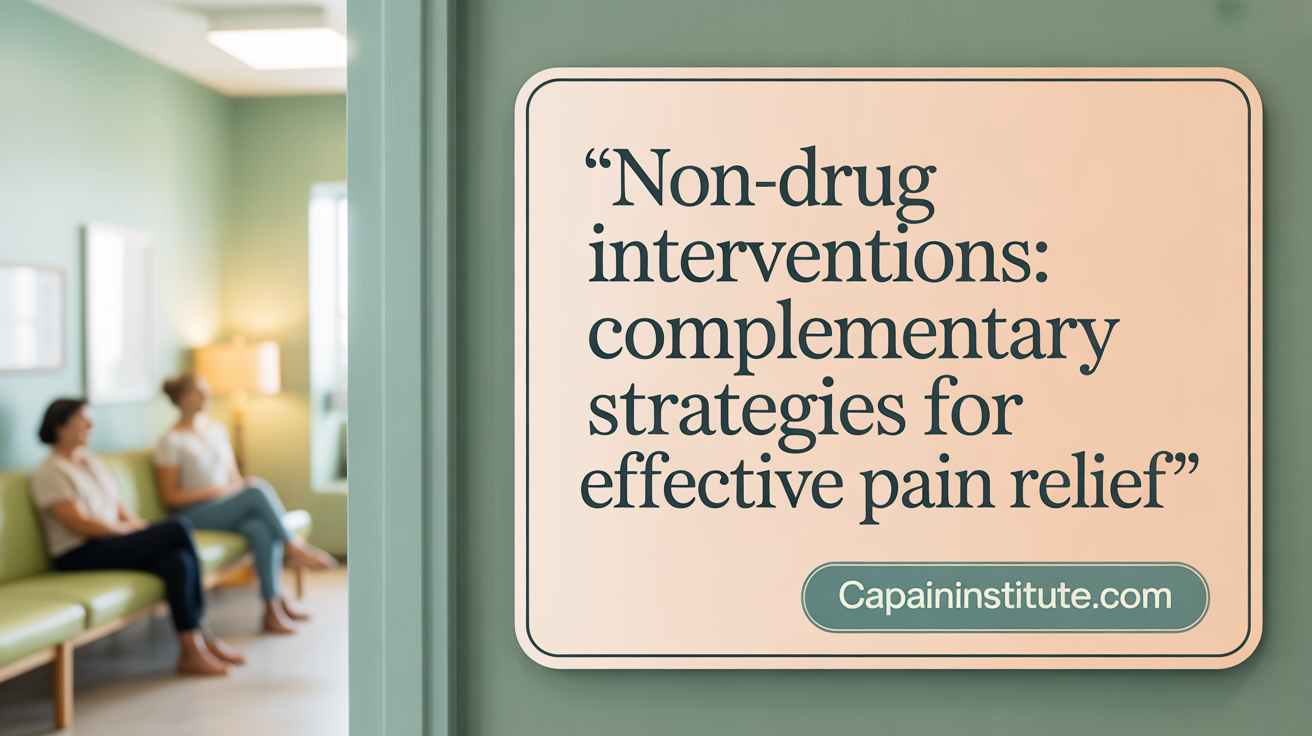
Yoga, acupuncture, massage, electroacupuncture
Non-pharmacological therapies like yoga, acupuncture, massage, and electroacupuncture have gained recognition as effective options for managing chronic pain. These approaches involve physical, energetic, and psychological components that work together to reduce discomfort and improve overall function.
Yoga combines physical postures, breathing exercises, and meditation to promote relaxation and flexibility. Studies show it can decrease pain intensity and enhance physical functioning in conditions like back pain and osteoarthritis.
Acupuncture involves inserting fine needles at specific points on the body to modulate pain signals and stimulate natural healing processes. Research indicates that acupuncture can significantly reduce pain severity and improve mobility.
Massage therapy focuses on manipulating soft tissues to relieve muscle tension, improve circulation, and decrease pain. Patients often experience immediate relief and longer-term benefits with regular sessions.
Electroacupuncture combines traditional acupuncture with electrical stimulation to enhance pain relief. It has demonstrated effectiveness in reducing postoperative pain and musculoskeletal discomfort.
Effectiveness in pain relief and functional improvement
The evidence supporting these therapies underscores their role in alleviating pain and enhancing physical function. For example, a study examining community-based pain programs found that patients experienced approximately 60% relief in their pain after integrating these interventions.
Patients often report improvements in mood, sleep, and daily activity participation, which are crucial for holistic health. Notably, these treatments tend to have fewer side effects compared to medications, making them appealing especially for long-term management.
In many cases, combining non-pharmacological methods with conventional therapies yields the best results. This integrative approach addresses multiple aspects of pain, from biological to psychological factors, offering a comprehensive plan to improve patient outcomes.
Benefits in combination with conventional therapies
When used alongside pharmacological treatments, therapies like acupuncture and massage can enhance pain control and decrease dependence on opioids. This is particularly relevant given the current emphasis on reducing opioid use in chronic pain management.
Healthcare providers often recommend a multimodal treatment plan tailored to individual patient needs. Such strategies can optimize pain relief, reduce side effects, and contribute to better long-term health and quality of life.
| Therapy Type | Main Benefits | Typical Use Cases | Additional Notes |
|---|---|---|---|
| Yoga | Reduces pain, improves flexibility, enhances mood | Chronic low back pain, osteoarthritis | Can be adapted for all levels |
| Acupuncture | Modulates pain signals, alleviates discomfort | Postoperative pain, migraines, musculoskeletal pain | Generally safe with trained practitioners |
| Massage | Relieves muscle tension, improves circulation | Neck pain, fibromyalgia, sports injuries | Often used as adjunct to other treatments |
| Electroacupuncture | Enhances acupuncture effects through electrical stimulation | Postoperative, musculoskeletal pain | Requires trained professionals |
This holistic approach empowers patients with additional tools to manage pain effectively. Incorporating these therapies into standard care offers promising avenues for long-lasting relief and improved quality of life.
Insights from the CDC 2022 Opioid Prescribing Guidelines

Recommendations to improve patient outcomes
The 2022 CDC guidelines emphasize a balanced approach to pain management, advocating for personalized treatment plans that consider the patient's unique needs. They recommend starting with the lowest effective opioid dose and regularly reviewing the patient’s response to therapy. The goal is to maximize pain relief while minimizing potential harms, including dependence or overdose.
Healthcare providers are encouraged to incorporate multimodal pain management strategies. This includes combining nonpharmacological therapies such as physical therapy, behavioral therapy, and complementary medicine, along with cautious opioid use when necessary. Such approaches can improve overall outcomes, reduce reliance on opioids, and promote quicker recovery.
Safe and effective opioid prescribing practices
The guidelines highlight the importance of careful patient assessment before initiating opioid therapy. Risk factors such as history of substance use disorder or mental health issues should be evaluated. Clear, documented treatment goals, including specific pain reduction targets, are essential.
Providers are advised to educate patients about safe use, storage, and disposal of opioids, and to monitor for signs of misuse or adverse effects regularly. Prescriptions should be limited in duration and dosage, with plans for tapering when appropriate. Using prescription drug monitoring programs (PDMPs) can further ensure safe prescribing practices.
Balancing pain relief with minimizing risks
A major focus of the guidelines is achieving the right balance between adequate pain control and minimizing the risks associated with opioid therapy. This entails cautious prescribing for acute pain, especially in opioid-naïve patients, and considering non-opioid alternatives first.
For chronic pain, the guidelines suggest a thoughtful approach that includes regular reassessment of the continued need for opioids. If risks outweigh benefits, alternative therapies should be prioritized. The overarching aim is to reduce the incidence of opioid use disorder and overdose while ensuring patients receive compassionate, effective pain management.
| Aspect | Recommendations | Rationale |
|---|---|---|
| Initiation | Use lowest effective dose, start with non-opioid options | Minimize risk of dependence and adverse effects |
| Monitoring | Regular follow-up, utilize PDMPs | Detect misuse early and adjust treatment |
| Patient Education | Inform about safe use, storage, disposal | Promote safety and reduce diversion |
| Tapering | Reduce dose gradually, plan for discontinuation | Prevent withdrawal and dependence |
The evolving evidence-based practices outlined in the CDC 2022 guidelines aim to improve patient care by making pain management safer and more effective, ultimately reducing the burden of opioid-related harms.
Addressing the Biopsychosocial Nature of Chronic Pain
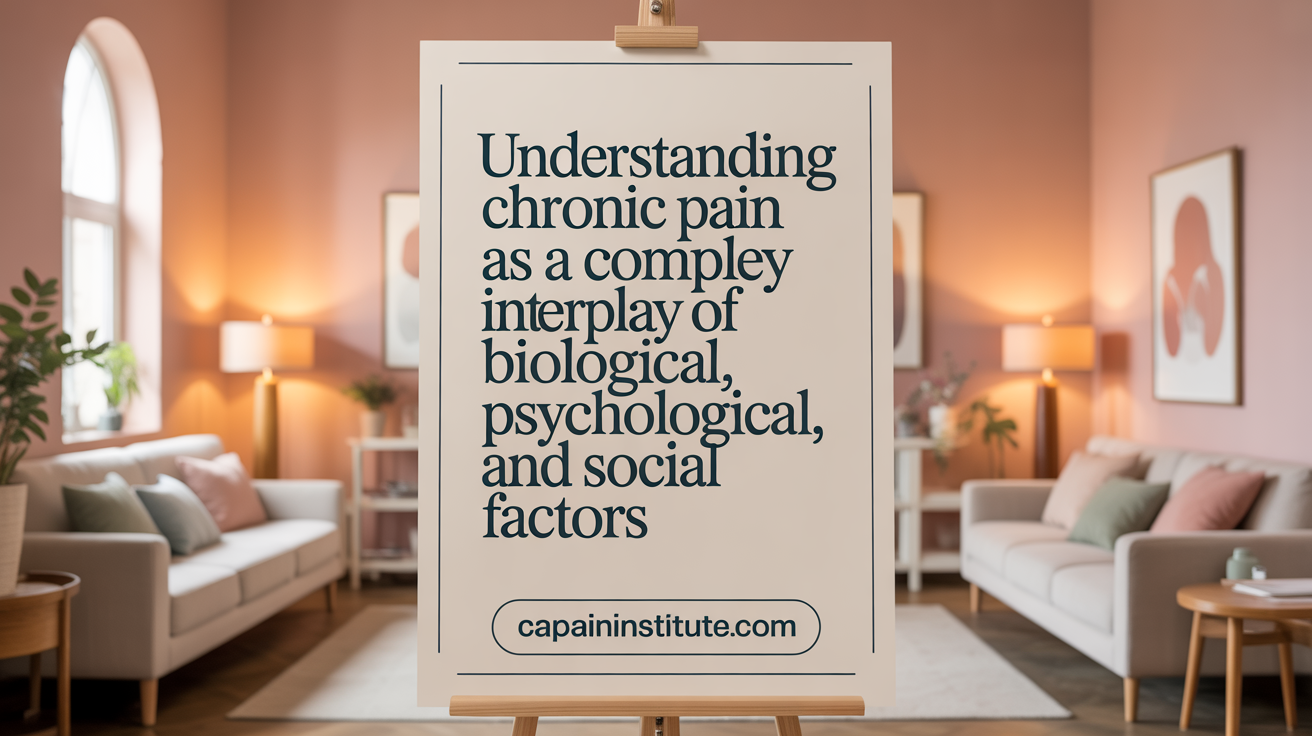
How is chronic pain a complex biological, psychological, and social phenomenon?
Chronic pain is not simply a result of tissue damage or medical conditions. Instead, it involves a complex interplay of biological, psychological, and social factors. Biological aspects include nerve changes and inflammation, while psychological elements involve mood, thought patterns, and pain perception. Social factors such as support systems, work environment, and social roles also influence how pain affects an individual.
This biopsychosocial model emphasizes that effective pain management must consider all these dimensions rather than only focusing on physical symptoms. Understanding this complexity helps healthcare providers develop comprehensive treatment plans tailored to individual patient needs.
How are complex cases identified in clinical practice?
Patients with more severe or persistent pain often present with additional challenges, such as depression, anxiety, and pain catastrophizing. Researchers and clinicians categorize these as complex cases, often using measures like the Hospital Anxiety and Depression Scale (HADS) and pain catastrophizing scales.
In a large study, about 21% of patients were classified as complex cases based on factors like high pain severity scores (7–10 on the Numeric Rating Scale), depression, or anxiety. These patients typically report lower satisfaction with treatments and perceive their general health as poorer.
Why is it important to tailor approaches to individual patient profiles?
Generic treatments often fall short because of the individual variability in pain presentation and underlying factors. For complex cases, personalized approaches that address biological, psychological, and social elements are crucial.
Research shows that strategies like combining pharmacological treatments with behavioral therapy, social support, and education improve outcomes. Moreover, understanding patient-specific factors like pain severity, mental health status, and social circumstances can guide clinicians in designing more effective, patient-centered care plans.
| Aspect | Importance | Tailored Strategies | Impact on Outcomes |
|---|---|---|---|
| Biological factors | Physical symptoms and nerve changes | Pharmacotherapy, interventional procedures | Improved pain relief and function |
| Psychological factors | Mood, thought patterns, coping | Cognitive behavioral therapy, counseling | Better emotional well-being, reduced catastrophizing |
| Social factors | Support systems, social roles | Social support, community resources | Enhanced social functioning, reduced isolation |
Addressing chronic pain through this comprehensive lens enables clinicians to consider the full scope of each patient’s experience, leading to better management and improved quality of life.
Treatment Satisfaction and Health Perceptions in Complex Pain Cases

Why do complex pain cases often have lower satisfaction levels?
Patients with complex chronic pain frequently report lower satisfaction with treatment outcomes. These individuals often face more severe symptoms, including higher pain scores, depression, anxiety, and pain catastrophizing, which hinder their perception of effective pain relief. Their conditions tend to involve multiple factors—biological, psychological, and social—that make standardized treatments less effective.
Research shows that around 21% of patients in pain studies are classified as complex cases based on factors like high pain severity on the Numerical Rating Scale (scores of 7–10), depression or anxiety (HADS > 10), and high pain catastrophizing (PCS > 31). These patients generally report less treatment satisfaction and perceive their overall health more negatively compared to non-complex cases.
How do outcomes compare between complex and non-complex groups?
Despite similar reductions in pain intensity scores after two weeks of treatment, complex patients typically experience poorer overall results in terms of satisfaction and perceived health. The data reveal that while both groups benefitted from pain reduction, complex cases felt less satisfied and judged their health as worse.
In particular, complex patients showed lower odds of achieving positive health perceptions, with statistically significant differences in treatment satisfaction and general health ratings. They often report less confidence in managing their pain and lower physical and emotional quality of life.
Does the perception of improvement affect overall health views?
Absolutely. Patients’ perceptions of their self-management ability and their attitudes toward treatment significantly influence their satisfaction and health perceptions. In programs addressing chronic pain, those who believe they are actively managing their condition tend to rate their health more positively.
Even if objective measures show similar pain reduction, how patients perceive their improvement plays a crucial role in their overall well-being. This underscores the importance of tailored, comprehensive approaches that consider psychological and social variables alongside traditional medical treatment.
Psychological and Functional Improvements with Social Learning Interventions

How does social learning influence perceived disability in pain management?
Recent studies have shown that social learning interventions can significantly reduce perceived disability among chronic pain patients. Participants who observed positive treatment outcomes, even in sham conditions, experienced greater improvements in their functional capacities. This suggests that witnessing successful pain management can bolster a patient’s confidence in their ability to cope, translating into tangible reductions in disability.
What impact do social learning approaches have on active coping and self-statements?
Both groups in studies targeting pain management exhibited notable changes in how they cope with pain. Specifically, they reported increased use of active coping self-statements, which are positive affirmations encouraging proactive management of pain. Conversely, negative self-statements, which often escalate feelings of helplessness, decreased significantly. These shifts reflect an improved mental framework allowing patients to face pain with more resilience and less catastrophic thinking.
How do these interventions affect mood and expectations of pain relief?
Mood improvements were pronounced, with depressed mood notably decreasing across all study groups. Additionally, patients' expectations regarding pain relief, initially unchanged immediately after intervention, increased significantly over time. As patients observed improvements and gained confidence through social learning, their outlook on pain and recovery became more optimistic, fostering a positive cycle that supports ongoing management.
| Aspect | Change Observed | Measurement Tools | Clinical Relevance |
|---|---|---|---|
| Perceived disability | Larger decrease in perceived disability in social learning group | Functional disability assessments (e.g., BPI WAW) | Indicates improved ability to manage daily activities despite pain |
| Active coping self-statements | Significant increase | Pain coping questionnaires | Enhances patients' capacity to actively manage pain, reducing reliance on passive strategies |
| Negative self-statements | Significant decrease | Self-statements scales | Reduces maladaptive thinking, improving overall mental health |
| Mood (Depression) | Significant decrease | CESD scale | Leads to better mental health, easing pain perception |
| Expectations of relief | Increased from postintervention to posttest | Patient expectation surveys | Fosters hope and engagement in ongoing treatment |
By integrating social learning strategies, patients are empowered to shift their perceptions and responses to pain. These psychological changes are crucial for long-term management, leading to better functional outcomes and quality of life.
Patient Satisfaction Drivers in Interdisciplinary Pain Management Programs
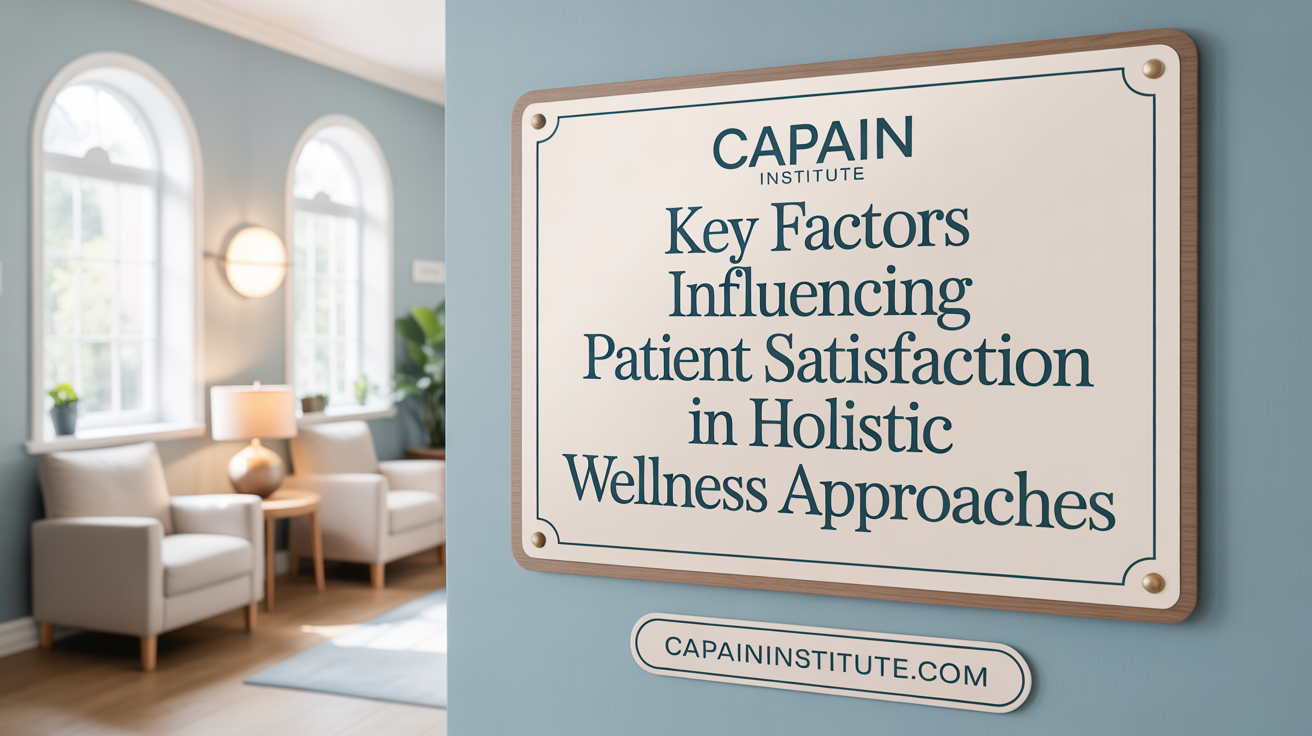
What are the benefits of using a multidisciplinary approach in pain management?
A multidisciplinary approach in pain management brings together healthcare professionals from diverse fields such as medicine, psychology, physical therapy, and alternative medicine. This collaboration allows for a thorough understanding of the complex nature of pain, which often involves physical, emotional, and social factors.
By combining different expertise, these programs provide personalized treatment plans tailored to each patient's unique needs. This can include medications, physical exercises, behavioral therapy, and complementary therapies, which together improve pain relief and overall function.
Research shows that patients in multidisciplinary programs often experience faster recovery, fewer side effects from treatments, and a reduction in reliance on opioids. Moreover, addressing psychological issues like anxiety and depression alongside physical pain helps improve mental health and quality of life.
Evidence from clinical practice indicates higher patient satisfaction levels, with many patients reporting better outcomes and a more positive healthcare experience. These programs also emphasize patient education, empowering individuals to actively participate in their treatment, which can lead to sustained improvements over time.
Overall, adopting a multidisciplinary approach enhances the effectiveness of pain management, offering comprehensive care that tackles all aspects of chronic pain.
How do pain-related variables influence patient satisfaction and goal achievement?
Studies have identified that several pain-related factors significantly impact how satisfied patients feel with their care and whether they achieve their treatment goals. Key variables include pain severity, emotional well-being, and perceptions of pain interference.
Patients reporting severe pain—often scores of 7–10 on the Numeric Rating Scale (NRS)—tend to have lower satisfaction levels and perceive less improvement, especially if their pain heavily interferes with daily activities.
Conversely, those experiencing moderate pain, or who perceive significant reductions after treatment, typically report higher satisfaction. The perception of achieving personal health goals also plays a crucial role, emphasizing the importance of individualized treatment plans that align with patient expectations.
In addition, emotional factors such as depression or anxiety can diminish satisfaction and hinder perceived progress, highlighting the need for integrated psychological support.
How do depression and attitudes toward self-management affect patient satisfaction?
Depressed mood and attitudes toward self-management are influential in determining treatment outcomes. Patients with depression often report worse pain intensity, greater disability, and lower overall health-related quality of life.
Research indicates that patients in the maintenance stage of self-management—those confident and actively engaged in managing their condition—experience greater satisfaction and achieve better health outcomes. These individuals are more likely to adhere to treatment recommendations, employ coping strategies, and maintain motivation.
Programs that foster self-efficacy and address psychological barriers can improve these attitudes, resulting in enhanced satisfaction and perceived goal accomplishment. Conversely, low self-management confidence or untreated depression can lead to poorer outcomes.
How does patient perception of their self-management influence satisfaction?
Patients’ perceptions of their ability to self-manage their pain significantly influence their overall satisfaction with care. Those who feel empowered and capable of managing their condition report higher satisfaction levels and perceive greater progress.
Effective education and supportive interventions that build confidence can reinforce positive perceptions. When patients believe they have control over their pain and health, they are more likely to engage actively in their treatment, adopt healthier behaviors, and report better quality of life.
In summary, positive patient perceptions of self-management are associated with increased satisfaction and better long-term health outcomes, underscoring the importance of patient-centered education and psychological support in pain management programs.
Long-Term Functional and Emotional Outcomes from Community Pain Programs
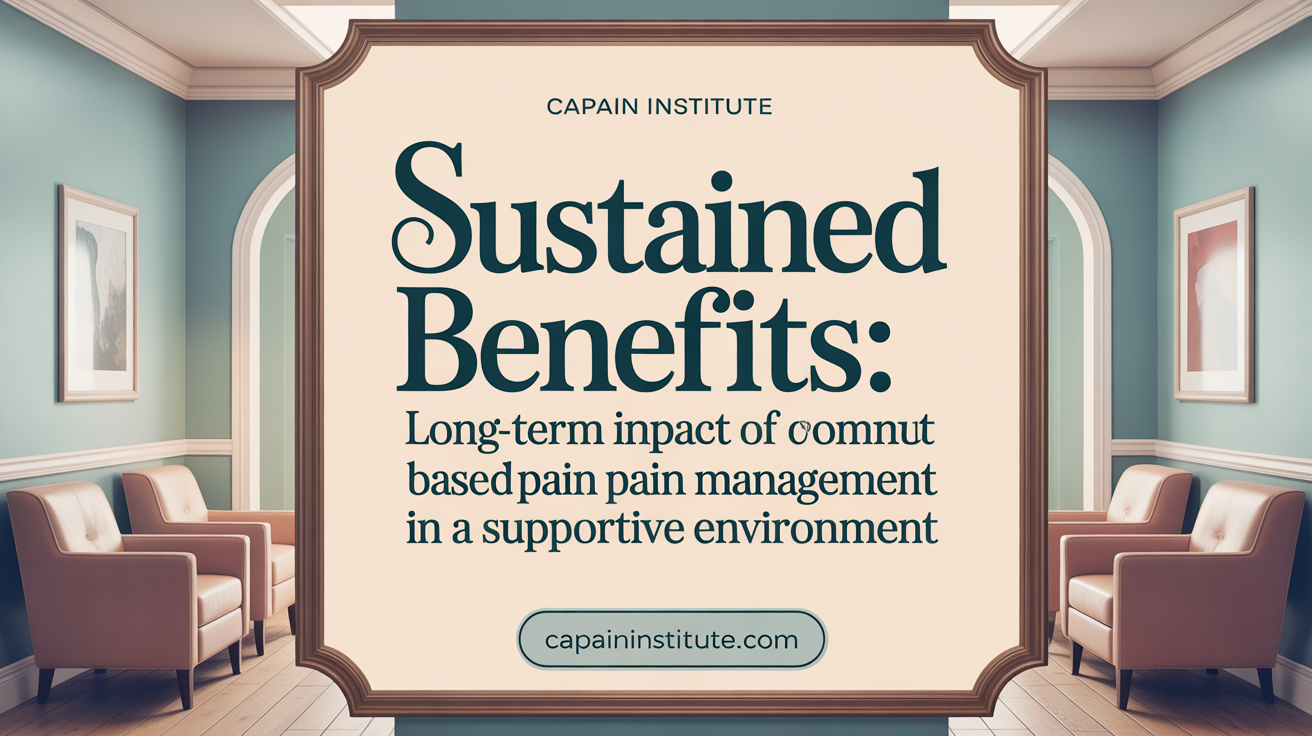
What are the long-term physical health improvements seen in community pain management?
Community-based interdisciplinary programs have demonstrated lasting benefits for patients suffering from chronic pain. Evidence shows that patients experience statistically and clinically significant improvements in their physical health, not just immediately post-treatment but continuing up to 12 months later. For example, physical health outcomes measured at discharge, 6 months, and 12 months post-discharge show sustained gains, with approximately 77%, 58%, and 76% of patients reporting they are much or very much improved, respectively. These outcomes highlight the effectiveness of comprehensive care models that address the multifaceted nature of chronic pain.
How do mental and emotional health outcomes change over time?
Beyond physical improvements, patients also report notable psychological benefits. Standardized measures like the CESD and GAD scales reveal significant reductions in emotional distress over time. Specifically, pain catastrophizing decreases by nearly 46%, and pain self-efficacy increases by 52%. Anxiety levels decrease by about 40%, and depression drops by roughly 50%. These psychological changes contribute to a better overall quality of life, enabling patients to better cope with their condition and engage more confidently in daily activities.
What social benefits are observed following community pain programs?
Social outcomes also show marked improvement. Data indicates that many patients experience significant enhancements in social functioning and employment. For instance, 55% of patients who were part-time workers initially gained full-time employment after completing the program. Similarly, 71% of students and 75% of individuals on other forms of social support reported better social integration and status. Moreover, a substantial portion of patients who were on disability—around 29%—noted increased participation and engagement in social roles, suggesting that holistic management of pain can lead to meaningful improvements in social well-being.
This comprehensive approach underscores that effective community-based pain management not only alleviates symptoms but also fosters resilience across physical, emotional, and social domains, providing patients with a better quality of life in the long term.
Examining Large-Scale Clinical Data for Patient Phenotyping in Pain
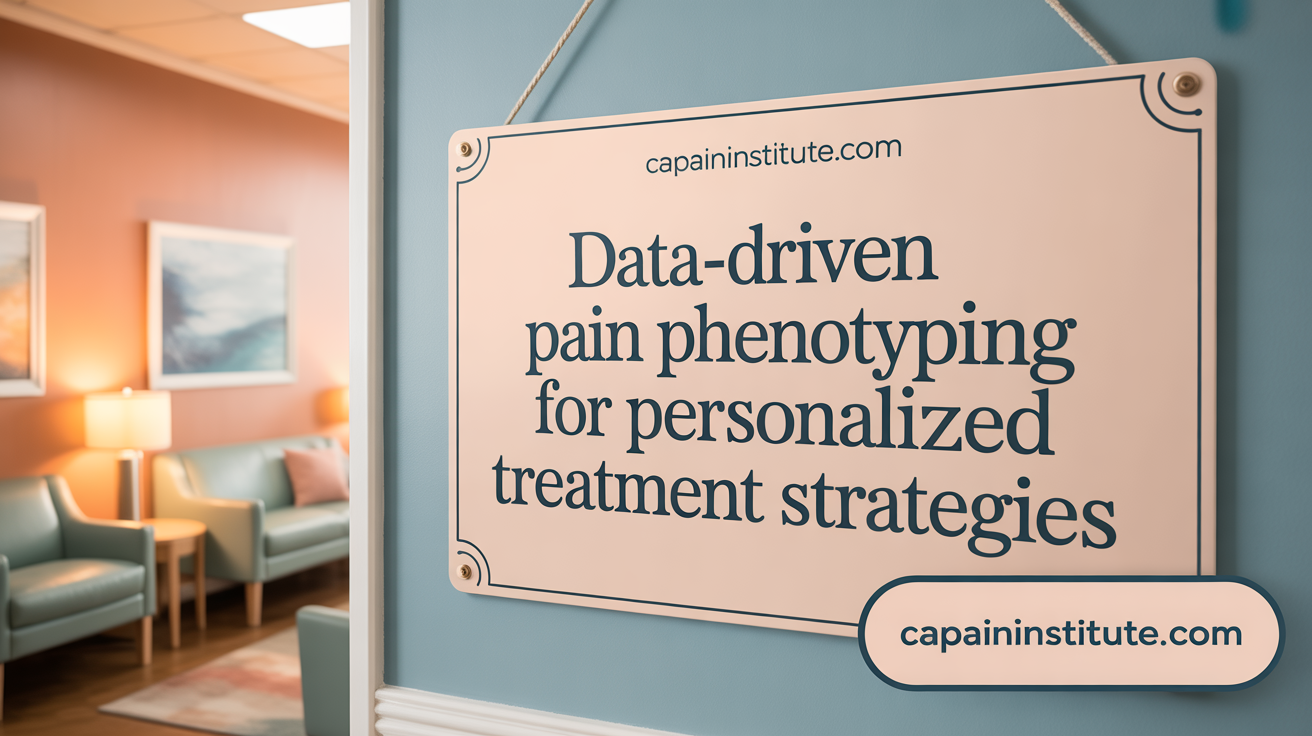
Use of patient-reported outcomes to characterize pain phenotypes
In pain management research, patient-reported outcomes are essential tools for understanding individual differences in pain experiences. Instruments like the PROMIS questionnaires evaluate various dimensions such as pain intensity, fatigue, emotional well-being, depression, anxiety, and social function. Through these standardized surveys, clinicians can gather comprehensive data directly from patients about how pain affects their daily lives.
A recent community-based study utilized these detailed patient reports to identify distinct pain phenotypes. By analyzing responses from hundreds of patients, researchers were able to classify individuals into different groups based on biopsychosocial factors. This phenotyping helps tailor treatments more effectively, moving beyond one-size-fits-all approaches to personalized pain management.
Identifying meaningful factors related to biopsychosocial functioning
The biopsychosocial model views pain as a complex interplay of biological, psychological, and social elements. Large datasets reveal that these factors significantly influence both pain severity and treatment outcomes.
For example, higher levels of pain catastrophizing—a psychological factor—are linked with worse pain perception and treatment satisfaction. Conversely, positive self-efficacy regarding pain management correlates with better functionality and mental health.
Social factors, such as employment status and social support, also shape a patient’s recovery trajectory. Patients experiencing improvements in social roles and relations often report reduced pain interference and emotional distress. These findings underscore the importance of a holistic approach that considers all aspects of a patient's life.
Relation of initial pain level to treatment gains
Data consistently indicate that patients presenting with higher initial pain levels tend to experience more substantial improvements following treatment. Studies show that those with severe pain at admission report the greatest reductions—around two points—on an 11-point pain scale after intervention.
This trend suggests that a higher starting point offers more room for measurable progress. Additionally, patients with severe pain often participate more actively in multidisciplinary programs, including physical, behavioral, and social interventions, which contribute to significant long-term benefits.
Understanding these dynamics allows clinicians to set realistic expectations and optimize resource allocation, ensuring patients receive appropriate and targeted therapy based on their initial pain severity.
| Data Point | Observation | Implication | Additional Detail |
|---|---|---|---|
| Pain severity | 60% experienced severe pain initially | High initial pain predicts potential gains | Patients with high baseline pain report greater improvement |
| Treatment response | Significant reductions in pain noted across severity levels | Tailored interventions can maximize benefits | High initial pain linked with larger reduction potential |
| Social and biopsychosocial factors | Affect treatment satisfaction and overall health | Holistic assessment enhances outcomes | Psychological readiness and social support are crucial |
Accurate patient phenotyping combined with insights into biopsychosocial factors and initial pain severity can greatly enhance personalized pain management strategies, ultimately improving patient quality of life.
International Comparisons of Pain Management Outcomes and Patient Satisfaction

Higher satisfaction and better pain management in the U.S. versus China
Research indicates notable differences in pain management effectiveness and patient satisfaction between the United States and China. In the U.S., about 85.2% of postoperative patients reported adequate pain control based on the Pain Management Index (PMI), a validated measure of pain treatment adequacy.
Additionally, U.S. patients expressed higher levels of satisfaction, scoring better on perception scales such as the pain management subscale (24.09 vs. 18.91), and reported more helpful medical information (average rating of 8.68 vs. 6.80). They were also more likely to have received detailed information about pain management (74.2% vs. 25.0%). These differences reflect the U.S. healthcare approach, which emphasizes multimodal analgesia and comprehensive patient education.
In contrast, Chinese patients reported lower satisfaction and less effective pain management, with only 39.0% reporting adequate control. They also scored lower on perceived helpfulness and information received, highlighting international disparities in patient outcomes.
Use of multimodal analgesia and patient education differences
Multimodal analgesia, involving the use of different pain-relief methods, was widely employed in the U.S., with 95.5% of patients utilizing this approach. Patient-controlled analgesia (PCA) was also common, used by 56.5% of U.S. patients. In China, these techniques were less frequently used—only 6.5% for multimodal analgesia and 31.0% for PCA—possibly reflecting differences in healthcare resources, practices, and emphasis on patient education.
Patients in the U.S. also reported receiving more detailed information about their pain and its management, which correlated with increased satisfaction. In China, less information was provided, which may contribute to lower perceived quality of care and satisfaction.
Predictors of patient satisfaction across countries
Across both countries, effective pain relief was a significant predictor of patient satisfaction. In the U.S., helpfulness of information and degree of pain relief stood out as the strongest factors.
In China, besides pain relief, factors such as the amount of information received, depressed affect, and dizziness impacted patient satisfaction. These variables highlight the importance of communication, emotional well-being, and side effect management in influencing patient perceptions.
Understanding these international differences underscores the importance of comprehensive, patient-centered pain management strategies. Standardized measures like the APS-POQ-R and PMI are valuable tools for comparing outcomes and guiding improvements across healthcare systems.
Effectiveness of Current Chronic Pain Management Programs

How successful are current chronic pain management programs in reducing pain?
Most pain management programs aim for a meaningful reduction in pain symptoms. On average, many achieve about a 30% decrease in pain scores, which is often considered clinically significant. This level of reduction correlates with patients feeling noticeably better and being able to engage more fully in daily activities.
These programs typically adopt a multidisciplinary approach, combining medications, interventional procedures, behavioral therapies, and complementary treatments like acupuncture and massage. This combination allows for tailored care that addresses the unique causes and presentations of each patient's pain.
While complete elimination of pain remains challenging for many, effective management helps prevent pain from escalating, supports faster recovery after surgeries or injuries, and improves overall function. Patients report improvements not only in pain intensity but also in emotional well-being, mobility, and quality of life.
Enhanced access to evidence-based treatments and innovative therapies plays a crucial role. For example, non-opioid medications and non-pharmacological approaches like yoga and electroacupuncture often lead to positive outcomes.
Improvements in physical and mental well-being
Several studies indicate that effective pain management programs result in significant health benefits. Patients experience reductions in pain-related disability and emotional distress, including anxiety and depression.
A community-based interdisciplinary program demonstrated a 50% decrease in pain catastrophizing and a 52% increase in pain self-efficacy, which are important mental health and self-management indicators.
Physical health after treatment shows sustained improvement over 6 to 12 months, with a majority of patients reporting being much or very much improved.
Similarly, mental health measures, such as reduced anxiety and depressive symptoms, have shown declines of around 40-50%, translating into better overall psychological resilience.
Social outcomes also improve, with many patients transitioning back to full-time work or educational pursuits, and fewer individuals on disability.
Limitations and variability of outcomes
Despite these positive trends, not all patients experience the same level of relief. Outcomes vary widely depending on factors such as the type and severity of pain, psychological health, and social support.
Among complex cases—patients with high pain scores, depression, or anxiety—the success rate can be lower in terms of satisfaction and perceived health improvements.
Additionally, some treatment modalities, like opioids, have been associated with worse long-term outcomes compared to non-medication approaches.
Recent guidelines emphasize personalized treatments, regular monitoring, and integrating psychological support to enhance effectiveness.
Overall, while current programs are successful for many, ongoing research and tailored strategies are essential to optimize pain relief across diverse patient populations.
| Aspect | Outcome | Variability Factors | Additional Insights |
|---|---|---|---|
| Average pain reduction | ~30% decrease in scores | Condition severity, individual response | Most programs aim for meaningful relief, not complete cure |
| Physical health improvement | Significant at 6-12 months | Chronicity, comorbidities | Sustained improvements enhance daily function |
| Mental health improvement | 40-50% reduction in symptoms | Psychological comorbidities | Psychological support boosts outcomes |
| Social reintegration | Transition to employment or studies | Socioeconomic factors | Reintegration enhances overall well-being |
| Variability among patients | Outcomes range from minimal to substantial | Treatment adherence, case complexity | Personalization improves success rates |
In conclusion, current chronic pain management strategies provide substantial relief for many, but addressing individual variability remains a critical focus for future improvements.
The Role of Personalized Pain Management in Enhancing Treatment Outcomes

How does personalized pain management improve patient outcomes?
Personalized pain management plays a crucial role in improving patient outcomes by customizing treatments to meet each individual's specific needs. This approach begins with comprehensive assessments that evaluate the biological, psychological, and social factors contributing to pain, recognizing that chronic pain is a complex biopsychosocial phenomenon.
Shared decision-making is central to this process. When healthcare providers collaborate with patients, they consider patient preferences, goals, and concerns, leading to treatment plans that are more acceptable and effective. Patients who are actively involved in their care tend to adhere better to therapy, resulting in greater satisfaction and better pain relief.
A multidisciplinary team approach is often employed in personalized pain management. This includes physicians, psychologists, physical therapists, and other specialists working together to address various facets of pain. Such coordinated care ensures that interventions are holistic, combining medication, behavioral therapy, physical rehabilitation, and alternative modalities like acupuncture or massage.
Patient education and self-management tools are vital components. Educating patients about their condition and empowering them with skills to manage their pain can reduce anxiety and catastrophizing, which are known to worsen pain perception. Educational initiatives also promote realistic expectations and foster a proactive attitude toward treatment.
Personalized treatment strategies contribute to reducing reliance on opioids, which carry risks of addiction and side effects. By exploring alternative therapies and implementing non-pharmacological options, clinicians can achieve effective pain control with fewer adverse outcomes.
Continuous monitoring and regular follow-up are necessary for adapting treatments over time. Reassessments help identify what’s working and what needs adjustment, ensuring sustained pain reduction and enhancement of the patient's overall quality of life.
In summary, tailored pain management fosters better outcomes by addressing individual needs comprehensively, encouraging active participation, and employing a multidisciplinary, flexible approach to treatment.
Summary of Research Findings and Best Practices in Pain Management

How can combining evidence-based pharmacological, behavioral, and interventional therapies improve pain management?
Clinical research emphasizes that a multifaceted approach to pain management yields better patient outcomes. Pharmacological treatments, such as non-opioid medications, have shown comparable effectiveness to opioids for some patients, with fewer side effects, especially for chronic conditions like musculoskeletal pain.
Behavioral therapies, including self-management strategies and social learning, enhance patients' coping skills and may lead to reductions in perceived disability and improvements in mental health. Interventional procedures and complementary therapies like acupuncture, massage, and electroacupuncture further support pain reduction and functional gains.
Integrating these modalities offers a personalized treatment plan, especially for complex cases with high pain scores or psychological comorbidities, leading to increased satisfaction and better physical and emotional health.
Why is validation and monitoring of outcome measures critical in pain management?
Using reliable and standardized tools such as Numerical Rating Scale (NRS), Visual Analog Scale (VAS), and the Patient-Reported Outcomes Measurement Information System (PROMIS) ensures consistent evaluation of pain and related biopsychosocial factors.
Validated instruments like IMMPACT core domains and APS-POQ-R provide comprehensive insights into pain intensity, emotional impact, physical functioning, and adverse effects. Regular monitoring through these measures helps tailor treatments, track progress, and identify patients with complex needs.
Outcome measure validation confirms the accuracy and sensitivity of assessments, enabling clinicians to identify meaningful improvements—such as a 30% reduction in pain—that align with patient-perceived benefits.
What are recommendations for optimizing patient outcomes?
Optimizing pain management involves several strategies:
- Regularly employ validated outcome measures to assess pain, function, and quality of life.
- Emphasize early pain control post-surgery to reduce interference with activities and prevent negative psychological effects.
- Incorporate clinician empathy into treatment, as higher levels of physician empathy are associated with lower pain ratings and improved quality of life.
- Use personalized, multimodal approaches that combine medications, behavioral strategies, and interventional care tailored to patient complexity.
- Promote patient education and self-management to support long-term health outcomes.
- Implement community and interdisciplinary programs that address biopsychosocial factors, leading to significant improvements in pain, mental health, and social participation.
By applying evidence-based practices and continuously monitoring outcomes, healthcare providers can significantly enhance the effectiveness of pain management and improve overall patient well-being.
Enhancing Patient Outcomes Through Evidence-Based Pain Management
The landscape of pain management is complex and evolving, with growing recognition of the multidimensional nature of pain and the importance of comprehensive outcome measurement. Evidence demonstrates that validated tools such as those advocated by IMMPACT and PROMIS are essential to accurately capture patient experiences and treatment effects. Multidisciplinary and personalized approaches emerge as key drivers of improved patient outcomes, facilitating pain reduction, functional restoration, and enhanced quality of life. Factors such as physician empathy and non-pharmacological therapies add significant value beyond traditional treatments. Continued research, including large-scale clinical data and international comparisons, contributes vital insights for refining clinical strategies. Ultimately, adopting evidence-based best practices and robust patient outcome monitoring will optimize pain management effectiveness and patient satisfaction globally.
References
- Outcomes in Pain Medicine: A Brief Review - PMC - PubMed Central
- Acute Pain Services and pain-related patient-reported outcomes in ...
- Evaluating patient outcomes in postoperative pain management ...
- Physician Empathy and Chronic Pain Outcomes - JAMA Network
- Clinical pain management: Current practice and recent innovations ...
- Pain Management - Research.va.gov
- CDC Clinical Practice Guideline for Prescribing Opioids for Pain
- Expectations of treatment outcome in complex cases of patients with ...
- Observing treatment outcomes in other patients can elicit... : PAIN
